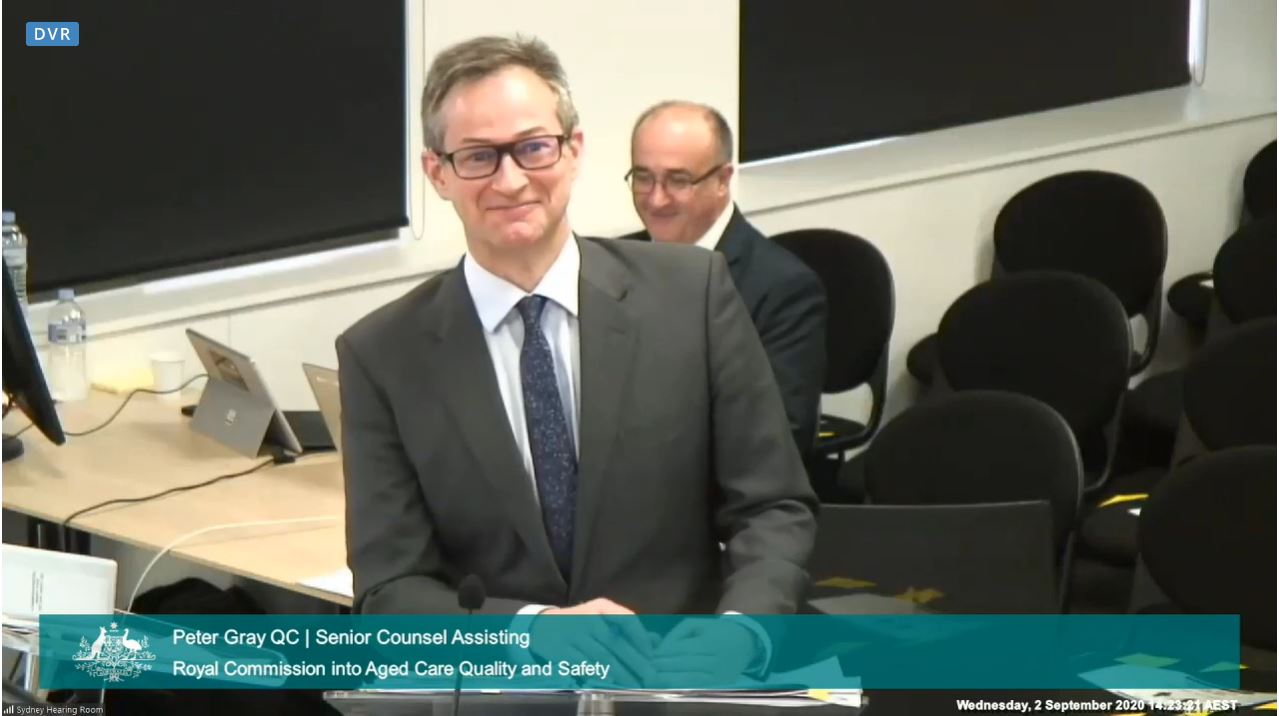There were few mainstream media headlines this week out of the Royal Commission’s hearing into how home care can transition to a new system. But the three days of hearings will be remembered as some of the most important in the Commission’s two-year lifespan – here’s why.
A lack of governance and leadership:
Home care is supposed to be the future of the sector – all of the research and reviews – including the Royal Commission’s own Interim reports tells us that people want to age at home and live independently for as long as possible.
Yet the sense from the Department of Health at the hearings was one of failure to provide leadership and guidance.
The revelation that just 300 of the 50,000 new Home Care Packages released by the Federal Government in the last three years are ‘new’ compared to the forward estimates in the Budget alone suggests a lack of planning on the part of the Government.
This was supported by the Department’s admission that they have done little planning for the major expansion of the home care assessment system and its cost that would be required.
Deputy Secretary for Ageing and Aged Care’s Michael Lye’s statement that the Department has “done some thinking” on preparing for the integration of the Home Care Package and CHSP programs, but that “is not concluded” came across as both ignorant and deeply concerning.

Mr Lye also took Senior Counsel Assisting Peter Gray QC’s point that the Department lacks the regional focus required to understand where thin markets might need to be addressed.
“That does take a level of local knowledge to be able to do that at that community level,” he stated. “So, structurally, that’s not within the Department of Health at the current time to do that kind of a thing.”
In short, Canberra is too far from ‘the ground’ to understand the sector.
A lack of data:
The failure to collect data to inform decision-making has been a key theme at every one of the Royal Commission’s hearings and this one was no exception.
Presented with data showing just 15% of home care recipients spend their funds on nursing compared to a large number of CHSP users, First Assistant Secretary for Aged Care Policy and Regulation, Dr Nicholas Hartland PSM admitted the Department still has no oversight of what home care recipients spend their packages on.
This is a fundamental failure to understand the market.
The Senior Counsel’s implication was clear: how can you plan and build an effective home care system without knowing who your customer is?
A regulator without teeth:
The regulator was exposed as being under-staffed and unable to provide the monitoring required to ensure quality care – and trust – in the home care sector.
Aged Care Quality and Safety Commissioner, Janet Anderson PSM, maintained they now have a “joined up” model to regulate providers, but acknowledged that the rapid expansion of home care – in particular new business models in the sector such as brokering and subcontracting arrangements – makes it a continual challenge to monitor services.

Ms Anderson also conceded high staff turnover and the use of contract staff was responsible for a decline in home care quality reviews and assessments over the past 12 months.
While the Commissioner would not respond to the Senior Counsel’s prodding to petition the Royal Commission for more resourcing, Ms Anderson did agree that the Quality and Safety Commission is required to operate within the Health portfolio’s average staffing levels.
This places a ceiling on the Commission and its duties.
Providers need to be responsible for ‘duty of care’:
Another important issue that was underscored by the Counsel Assisting’s focus on online support worker platforms was who held responsibility for the quality of care and services delivered under this model.
Mable Director and co-founder Peter Scutt maintained the approved provider through which clients sourced workers from his platform was responsible, but it was clear that both the Senior Counsel and the Commissioners held concerns that this did not provide adequate protections to workers and clients.
This suggests the Royal Commission could recommend more regulation and red tape for home care providers, including imposing a formal ‘duty of care’ on operators plus the use of star ratings and quality indicators to monitor quality.
Consumers need to pay more:
An underlying issue that did not receive much airtime, but was still picked up on by Commissioner Lynelle Briggs.
She noted that the Commission has heard repeatedly that older people do not want to pay for services, but concluded that the Government will need to make “some pretty tough decisions” to ensure consistent pricing across the sector as the HCP and CHSP programs are integrated.

Are the politicians prepared to force people to foot the bill for services?
The Commission’s research says Australians are prepared to pay more – if the services they receive are safe and of high-quality.
The need to balance ‘care’ with quality of life:
A favourite topic of Commissioner Briggs, and one that saw some debate among the witnesses.
One of the Counsel Assisting’s propositions is for home care funding to only be spent on “aged care-related” services or items – but as the evidence this weeks has shown, that can extend from clinical and nursing care to a worker to help coordinate someone’s creative passions, as seen in the case of Eileen Kramer.
The Commissioner has previously made it clear that aged care should not only be about the final days and months of someone’s life, but the last 10 to 15 years.
But providing social supports and services on top of others is not cheap.
Will the Royal Commission’s next hearing on funding and financing resolve the question – who will pay?










